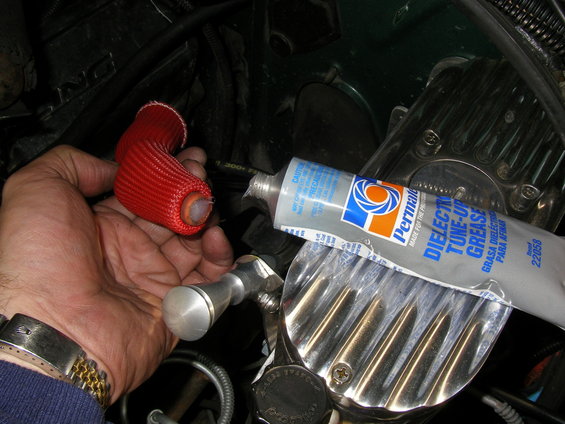

“What I find to be the easiest way to do that is to install all the wires on all the spark plugs, route them the way you want to up to the distributor, bring the wire up to the terminal end cap that it’s going to connect to, then give yourself about half an inch of extra room for movement, and cut the wire.”įrom there we move on to assembly. With that squared away, it’s time to figure out the wire lengths you need. “That could be under the exhaust, or over it, around the valve cover or over it – however you want to do it, you just need to determine which boot will allow you to do that.” “First determine what type of boot is going to allow you to route the wire where you want to route it,” he says. But in situations where a direct-fit set won’t work, building your own set of wires to the required lengths is the best way to ensure proper fitment, and it allows you to route the wires exactly the way you want to. So we’ve established that there’s no shortage of reasons to get a good plug wire that’s designed for your specific application. MSD offers the correct boots and terminals to build wires for these setups as well. Often, coil relocation or non-factory valve covers require custom wires. “So if they want to check valve lash between rounds, it’s just one less thing to have to remove.”Ĭoil-near-plug engines, such as the ever-popular LS, still require quality spark plug wires.

“A lot of racers like to route them around the valve cover or under the exhaust,” he explains. And if your wire is longer than it needs to be, that extra length of wire is creating more ohms of resistance, thus taking potential energy away from your plug.”Īnd custom routing can save time for teams at the track. “So if you don’t route them exactly that way, your wires are going to be sort of a mess. “A lot of times when you buy a pre-made set, the wires are designed to be routed a very specific way,” Fordyce says. “If you bolt up a turbo in there, for instance, that’s going to radiate a significant amount of heat on its own.”Įxhaust modifications are a significant factor as well – if you change from cast iron manifolds to a set of headers, you’re likely to see increased engine bay temps because the cast iron of the manifold is better suited to retain heat than thin-walled headers are.īeyond maintenance and performance concern, a new set of properly fitted spark plug wires can provide both aesthetic and pragmatic benefits, too. “Anything you do to make power is going to develop heat, and that’s going to affect the temperatures under the hood,” Fordyce points out. They also boast thermal protection up to 600 degrees, something that becomes an increasingly important consideration as you ratchet up the performance in your build. Sets like the Accel 300+ Thundersport wire offer 150 ohms of resistance per foot to better suppress unwanted RFI and EMI interference, an important feature for both street-driven cars and race cars that use data acquisition systems and other sensitive electronics. With only 40 to 50 ohms of resistance per foot, the loss of spark energy in this wire is minimized, ensuring the cylinder is getting all the juice it needs for a proper burn.īut there’s also the construction of high performance plug wires to consider, along with the expected use-case.
.jpg)
In applications where the latter of the highest importance, a plug wire like the MSD Super Conductor might be just the ticket. It’s ostensibly a balancing act between minimizing RF and electromagnetic interference and delivering the maximum amount of spark energy to the plug. That’s where it becomes important to take note of the resistance rating of a given spark plug wire. And if you can’t burn it properly, it’s kind of a waste to do that.” Any time you start adding things like blowers, turbochargers, nitrous, or you change your camshaft, et cetera, it’s going to demand more of everything else in the motor. “When you build a performance engine, you want as much energy as possible to the plug for a better burn in the cylinder. There are also the demands of high performance builds to consider, he notes.

They also ensure a rigidly secured connector which will allow for years of trouble-free service. Utilizing the right tools for the job, such as this MSD wire stripper (PN35051) and crimper help make the job of making custom wires go smoothly.


 0 kommentar(er)
0 kommentar(er)
